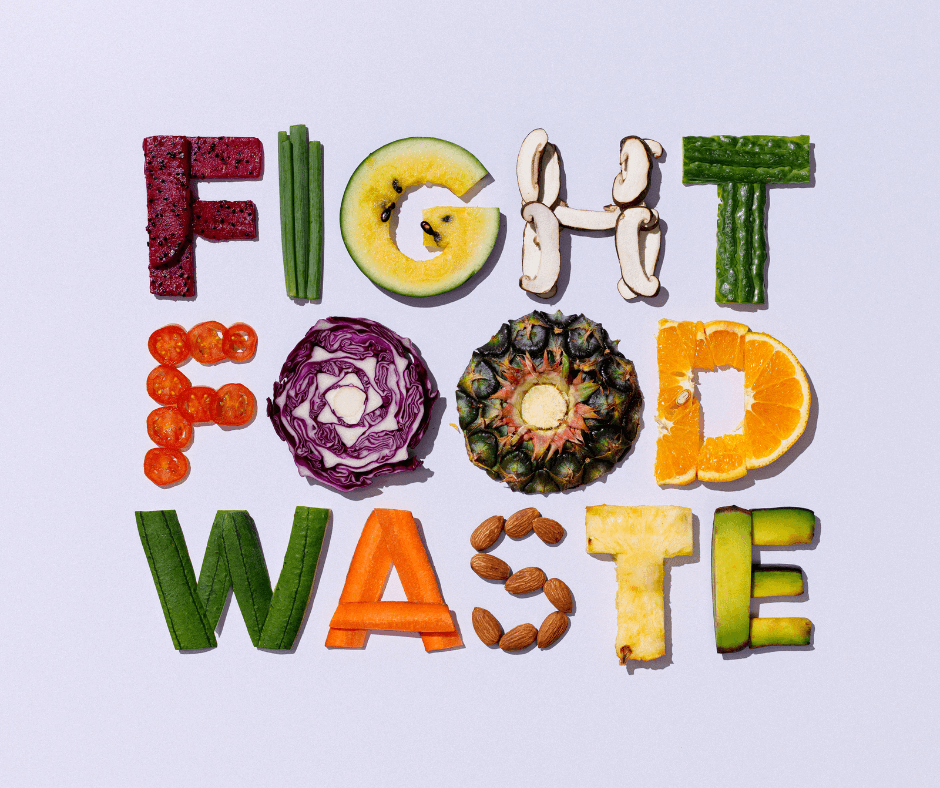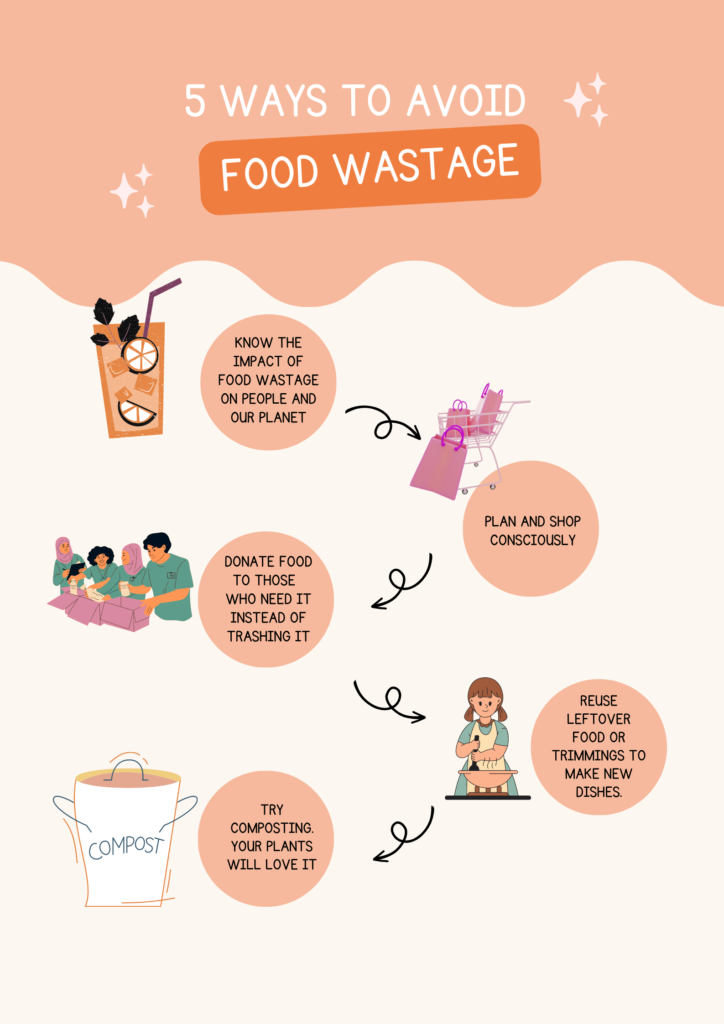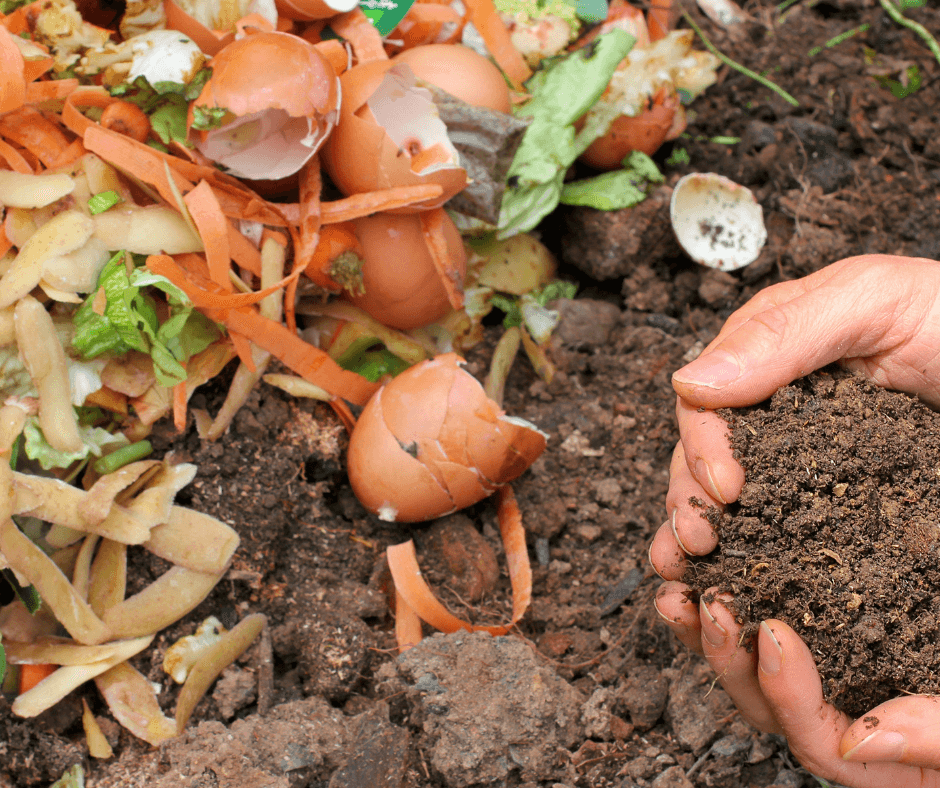Is food wastage a big problem? Here are a couple of food wastage facts from the World Food Program to answer that question.
We produce enough food to feed the world’s population and yet about 800+ million people go to bed hungry on a daily basis.
On an annual basis, 3 billion tons of greenhouse gases are produced in developed countries due to wasted food that goes into landfills.
If you are asking yourself how to avoid food wastage, it’s the right first step in making better use of what we produce or cook. Let’s delve into more details of what we can do to reduce the impact and practice sustainable living.

How common is food wastage?
We’ll look at what we do at home or in our lives instead of macro statistics. How often do we cook more than we need or order a lot more than we can eat?
How often do we buy or store foodstuffs that just rot in our fridges or kitchen containers? The answer to these in a lot of our cases will be that it is a common occurrence. Maybe not every day, but often enough to be seen as wasteful.
What about special occasions or when we have family and friends over? Food wastage at weddings, especially in India is about 10-20% according to a 2019 article by Food Tank.
Now, if we expand that question to how much food is wasted in India, then the UNEP Food Waste Index Report of 2021 states that the annual household per capita food waste in India is 50 kgs.
That’s a lot, isn’t it?
Why should we avoid the wastage of food?
From the statistics we’ve looked at so far, the benefits of reducing or stopping food wastage include:
- We are wasting money, time, and effort that has gone into growing, transporting and purchasing food. Avoiding waste is one way to save money too.
- We can cut down on environmental problems like greenhouse gas emissions.
- By consuming what we need – nothing more or less, we can ensure food security which is a growing problem in the world.
- There’s a good business case for countries and corporations to gain both financial and non-financial advantages through food waste reduction.
- What we take for granted is not even available to some people. I know that life is not fair but if we have the chance to bring in some fairness, then we should try.
Just to expand a little bit on food security, its definition as per the World Food Summit of 1996 is as follows: “Food security is defined when all people, at all times, have physical and economic access to sufficient safe and nutritious food that meets their dietary needs and food preferences for an active and healthy life.”
This has four components. First is enough supply or availability of food. We produce enough to feed everyone on our planet. Next is being able to afford food and have physical access to it. This is the step where there is inequality if 800+ million people go hungry.
The third component is food utilization by our bodies to obtain requisite nutrients. The last component is about the stability of the first three factors which is surely lacking if food security is a growing concern.
Causes of food wastage
To answer how to avoid food wastage, we’ll also need to spend a minute or two on what causes food wastage.
It is not just household food wastage that is a problem. Food loss that occurs even before it gets to the consumption stage also requires consideration.
For instance, the Food and Agricultural Organization or FAO estimates that about 14% of the food produced globally is lost even before it reaches retail stores. This could be due to various reasons including not harvesting at the right time, improper storage, and transportation.
Shopping without planning, not caring if food gets wasted, or not making conscious efforts to redistribute excess food are a few reasons for food waste.
Types of food waste
This could be in the form of expired products, i.e., products with a short shelf-life such as milk, curd, vegetables, ready-to-cook food with an expiration date, etc.
Grains go to waste in storage facilities or even in our homes because they haven’t been utilized or preserved properly.
It can also be fruit or vegetable peels or by-products that could have other potential uses. Then there is leftover or uneaten food at our residences or restaurants.
Unavoidable food waste can include let’s say the core of an apple, egg shells, bones, or inedible parts of seafood as examples. This doesn’t count as food waste though.

How can we avoid food wastage?
It is never nice when something goes to waste, especially when we’ve invested money in buying that product or spent time making or growing it.
In my case, I used to overeat to avoid wasting food or eat it the next day when it is no longer fresh or as flavourful as it is meant to be.
Both these instances are not ideal. How do we then find a middle ground? Here are a few thoughts from what I’ve read and experienced.
The first thing is to understand the impact and eliminate the possibility of food waste as much as possible. The next step would be finding ways to reduce the amount that goes to landfills.
The first two steps require planning. We plan our days and our holidays. If that extends to meal prep and grocery shopping too, that will help eliminate excessive purchases and wastage.
The third possibility is the distribution of excess food. Find food banks to donate excess food, especially after a party or an occasion. If you see construction workers or housekeeping staff, you can ask if they are willing to accept excess food instead of binning it.
One of my neighbors came up with the idea of placing a wide-brimmed bucket at the entrance of our apartment building. Our residents dispose of vegetable peels, overripe bananas, and leftover plain rice or bread in that bucket.
Now, I live in an area where cows and buffaloes go past my apartment to graze. They empty the bucket when they pass through. This might not work or probably not appeal to everyone, but it’s still an idea.
The fourth thing to try is to compost if that’s possible. This is one method of food waste recycling. Might take effort, but it will be worth it. My sister-in-law does this for her rooftop garden.
The fifth is reuse or repurpose. To me, using vegetable and fruit peels to make tea, polish objects or accessories, etc. are not effective because we will still have to throw away those peels once used. That’s just my opinion though. A better option would be to use them to make other dishes like pickles, desserts or fries.
My mom uses Jackfruit seeds in curries and I love how they taste. Instead of spending on trail mix, separate, dry out, and make your own using pumpkin or watermelon seeds.
I tried my hand at painting Pistachio shells for a DIY project. I used it to make flowers and stick them on my balcony wall. They fell off in about 3 months, so now they are just sitting in a decorative bowl with some colored pebbles. A fun experiment, with disastrous results.

The end
I couldn’t think of creative ways to say “in conclusion”, so I’m borrowing this line from our old movies. By the way, Quora’s AI just told me that movie makers found more creative ways and therefore stopped using “The End”. It’s the opposite in my case 😊.
The point of the examples quoted is to encourage ways to reduce food waste. There are merits and demerits that we need to evaluate and choose what works for us.
The internet is full of ideas for anyone that requires inspiration.